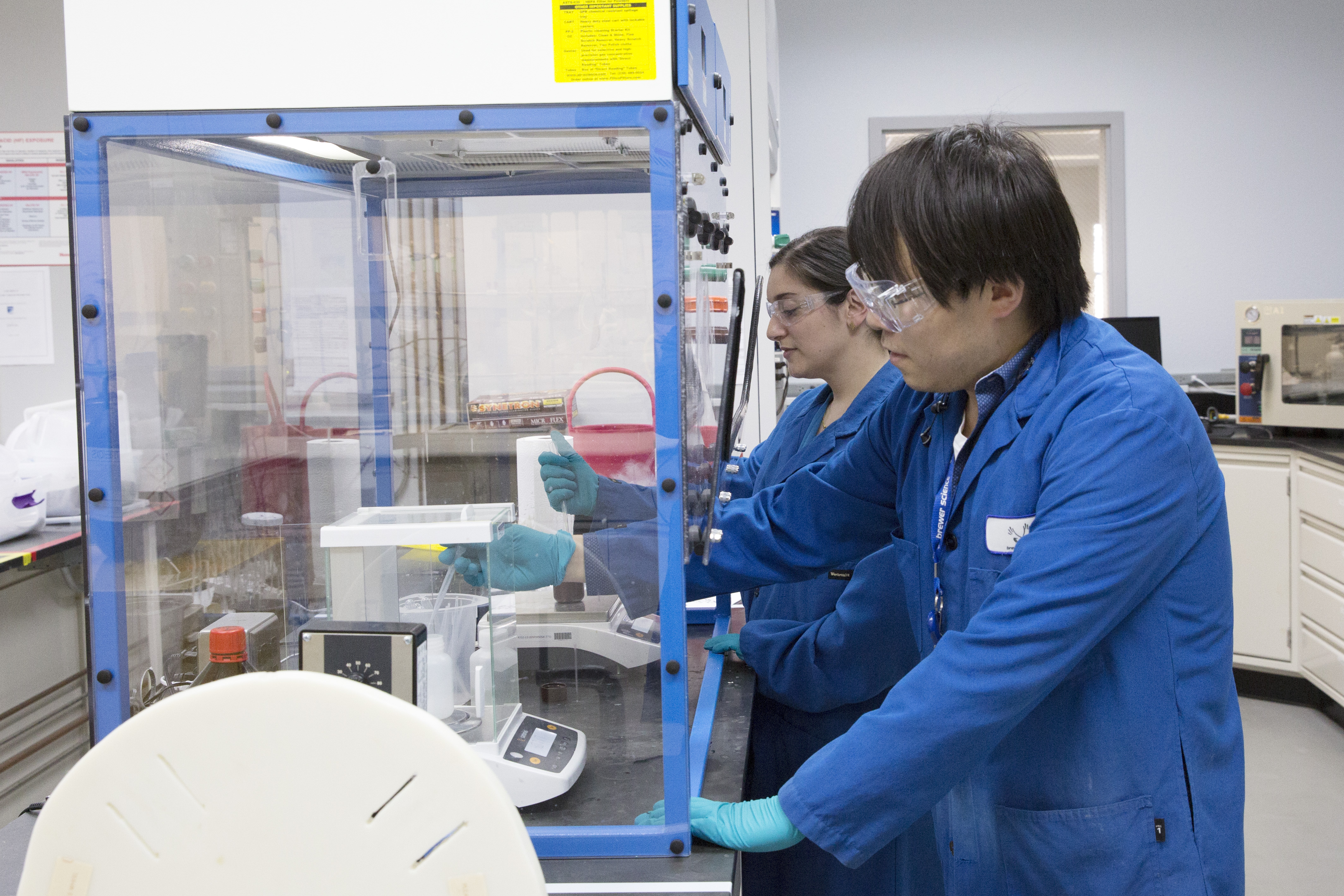Brewer Science has always had a reputation for innovative research. As a company, we have constantly pushed ourselves to not only work at the cutting edge of the industry but to push past that and address the future needs of the industry. As we continue to plan for the future needs of the lithography industry, we are constantly looking for new opportunities to build strong partnerships that will all us to produce the highest quality results for our customers.
The industry has been pursuing several techniques for addressing the scaling limitations of immersion lithography. One of the techniques considered for next-generation lithography is extreme ultraviolet (EUV) lithography. Developing materials for EUV brings with it some major challenges including material characterization. With the difficulties of generating EUV photons and the cost of an EUV tool, scientists at Brewer Science have been working closely with collaborators to develop state of the art materials to enable EUV technology.
 Brewer Science has been partnering with imec for almost 20 years. Imec is an organization, located in Belgium, that specializes in nanotechnology research and houses assignees from most major players in the lithography industry. Since 2006, imec has worked with tool manufacturers, resist vendors, and materials suppliers, such as Brewer Science, acting as a true collaboration focal point for EUV research. Brewer Science assignees at imec, working together with imec scientists, are collaborating in a Joint Development Program to study material interactions and properties at EUV wavelength. The learning from this program will be used to design better materials to enhance EUV lithography performance.
Brewer Science has been partnering with imec for almost 20 years. Imec is an organization, located in Belgium, that specializes in nanotechnology research and houses assignees from most major players in the lithography industry. Since 2006, imec has worked with tool manufacturers, resist vendors, and materials suppliers, such as Brewer Science, acting as a true collaboration focal point for EUV research. Brewer Science assignees at imec, working together with imec scientists, are collaborating in a Joint Development Program to study material interactions and properties at EUV wavelength. The learning from this program will be used to design better materials to enhance EUV lithography performance.
In addition to our active partnership with imec, scientists at Brewer Science have recently established an active collaboration with NIST (National Institute of Standards and Technology) located in Gaithersburg, MD. NIST has unique and exceptional capabilities for measuring material properties. Our collaboration with NIST has allowed our scientists to understand the way that their materials behave when exposed to EUV light. As mentioned above, generating EUV photons is not as simple as with ArF or KrF technologies where traditional exposure tools can be utilized.
Nobel prize winner Kenneth G. Wilson is quoted as saying “The hardest problems of pure and applied science can only be solved by the open collaboration of the world-wide scientific community.”[1] Here at Brewer Science we practice this every day. Our Ecosystem starts in Rolla, Missouri and spans the globe. Visit our website to learn more about our partnerships and our robust lithography portfolio.
[1] "Kenneth G. Wilson - Banquet Speech". Nobelprize.org. Nobel Media AB 2014. Web. 5 Feb 2018. <http://www.nobelprize.org/nobel_prizes/physics/laureates/1982/wilson-speech.html>


Subscribe to Our Blog